
Appomattox is a town in Appomattox County, Virginia, United States. The population was 1,733 at the 2010 census. It is the county seat of Appomattox County.

Wilmer McLean was an American wholesale grocer from Virginia. His house, near Manassas, Virginia, was involved in the First Battle of Bull Run in 1861. After the battle, he moved to Appomattox, Virginia, to escape the war, thinking that it would be safe. Instead, in 1865, General Robert E. Lee surrendered to Ulysses S. Grant in McLean's house in Appomattox. His houses were, therefore, involved in one of the first and one of the last encounters of the American Civil War.

The Appomattox Court House National Historical Park is a preserved 19th-century village in Appomattox County, Virginia. The village is the site of the Battle of Appomattox Court House, and contains the McLean House, where the surrender of the Army of Northern Virginia under Robert E. Lee to Union commander Ulysses S. Grant took place on April 9, 1865, an event widely symbolic of the end of the American Civil War. The village itself began as the community of Clover Hill, which was made the county seat of Appomattox County in the 1840s. The village of Appomattox Court House entered a stage of decline after it was bypassed by a railroad in 1854. In 1930, the United States War Department was authorized to erect a monument at the site, and in 1933 the War Department's holdings there was transferred to the National Park Service. The site was greatly enlarged in 1935, and a restoration of the McLean House was planned but was delayed by World War II. In 1949, the restored McLean House was reopened to the public. Several restored buildings, as well as a number of original 19th-century structures.

The Battle of Appomattox Court House, fought in Appomattox County, Virginia, on the morning of April 9, 1865, was one of the last battles of the American Civil War (1861–1865). It was the final engagement of Confederate General in Chief, Robert E. Lee, and his Army of Northern Virginia before they surrendered to the Union Army of the Potomac under the Commanding General of the United States Army, Ulysses S. Grant.

The Battle of Sailor's Creek was fought on April 6, 1865, near Farmville, Virginia, as part of the Appomattox Campaign, near the end of the American Civil War. It was the last major engagement between the Confederate Army of Northern Virginia, commanded by General Robert E. Lee, and the Army of the Potomac, under the overall direction of Union General-in-Chief Lieutenant General Ulysses S. Grant.
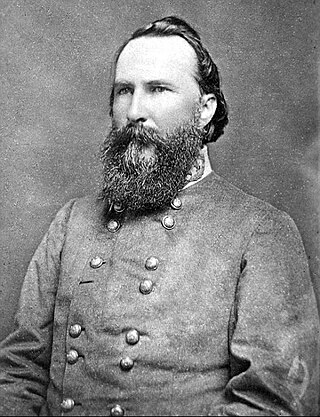
The Battle of Rice's Station was a minor engagement in Appomattox Campaign of the American Civil War that was fought at the same time as the Battle of Sailor's Creek on April 6, 1865. In the early morning of April 6, Confederate Lieutenant General James Longstreet's command reached Rice's Station, Virginia on the South Side Railroad. As Longstreet's corps was the first to reach Rice's Station after Lee moved his army west from Amelia Springs, Virginia, they awaited the remainder of the army, most of which ended up being delayed at the Battle of Sailor's Creek.
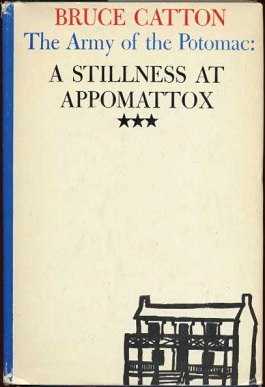
A Stillness at Appomattox (1953) is a non-fiction history book written by Bruce Catton. It recounts the American Civil War's final year, describing the campaigns of Ulysses S. Grant in Virginia during 1864 to the end of the war in 1865. It is the final volume of Catton's Army of the Potomac trilogy, having been preceded by Mr. Lincoln's Army (1951) and Glory Road (1952).

The McLean House near Appomattox, Virginia is within the Appomattox Court House National Historical Park. The house was owned by Wilmer McLean and his wife Virginia near the end of the American Civil War. It served as the location of the surrender conference for the Confederate army of General Robert E. Lee on April 9, 1865, after a nearby battle.

The Clover Hill Tavern with its guest house and slave quarters are structures within the Appomattox Court House National Historical Park. They were registered in the National Park Service's database of Official Structures on October 15, 1966.

The Old Appomattox Court House is a former county courthouse within the Appomattox Court House National Historical Park. In the 1800s this structure gave the surrounding village the name Appomattox Court House. Built in 1846, the structure served as the courthouse for Appomattox County, Virginia. Confederate General Robert E. Lee surrendered his army nearby in 1865, during the closing stages of the American Civil War, but the courthouse was closed that day and was not used in the proceedings. The village where the old courthouse was located had entered a state of decline in the 1850s after being bypassed by a railroad, and when the courthouse burned down in 1892, the county government was moved to Appomattox, Virginia.

The Charles Sweeney Cabin is a structure within the Appomattox Court House National Historical Park. It was registered in the National Park Service's database of Official Structures on June 26, 1989.
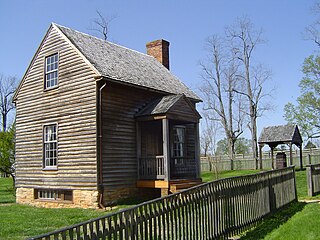
The Jones Law Office, also known as the Lorenzo D. Kelly House, is a structure within the Appomattox Court House National Historical Park. In the nineteenth century the structure was owned by Kelly and used as a single-family house. The original law office was also used as a dwelling by John Robinson for his large family in the nineteenth century after Kelly.

The New County Jail is a structure within the Appomattox Court House National Historical Park. It was registered in the National Park Service's database of Official Structures on June 26, 1989.
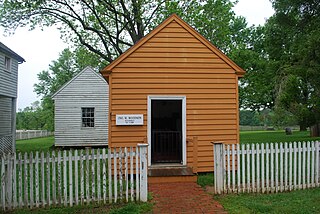
The Woodson Law Office is a structure within the Appomattox Court House National Historical Park. It was originally built by Samuel McDearmon in 1854 and rented by Woodson for his law office until he purchased it a couple of years later. It is a small structure and was built next to the main general store of Appomattox.

The Peers House is a structure within the Appomattox Court House National Historical Park. It was registered in the National Park Service's database of Official Structures on June 26, 1989.

The Bocock–Isbell House is a structure within the Appomattox Court House National Historical Park. It was registered in the National Park Service's database of Official Structures on June 26, 1989.

The Sweeney Prizery is a structure within the Appomattox Court House National Historical Park. It was registered in the National Park Service's database of Official Structures on June 26, 1989.
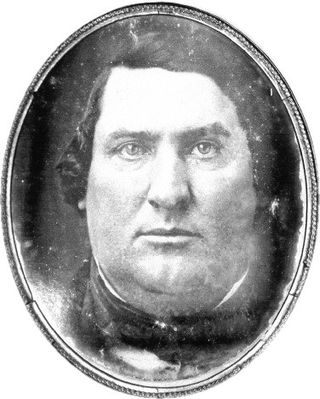
Samuel Daniel McDearmon (1815–1871), also known as Samuel D. McDearmon, was a Confederate army officer during the American Civil War. He held a number of political and government offices, and played a significant role in the development of Appomattox and Appomattox Court House, Virginia.
Appomattox Court House could refer to:





















